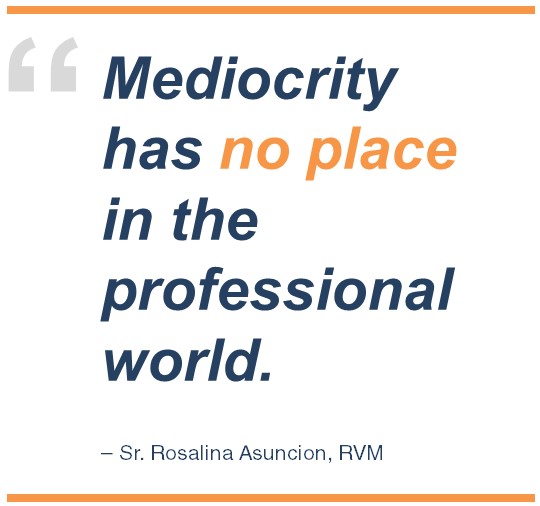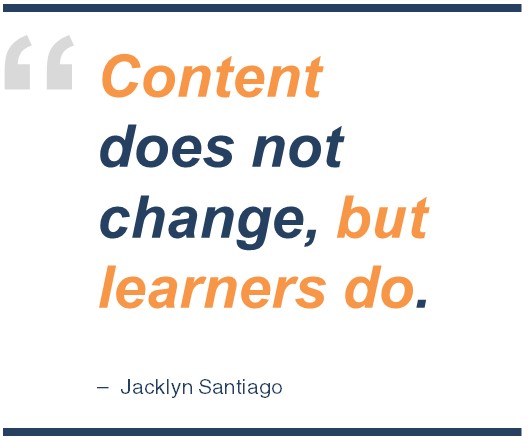The Hybrid Learning Advantage
Keeping up with the needs of 21st century learners
What do you get when you combine traditional classroom teaching and the convenience and flexibility of e-learning? You get an innovative learning approach called hybrid learning where teachers integrate technology-based digital instruction with face-to-face learning.

According to Marion Jude Gorospe, e-learning program coordinator of Miriam College, a school that stands at the forefront of technology use in education in the country, hybrid learning is essentially a mix of three platforms: online learning, mobile learning, and classroom learning. Online learning comes from web-based resources students navigate to acquire content and lessons from; mobile learning is the use of apps with which students can express their creativity based on what they’ve learned, and classroom learning is working with the teacher and other students for concept clarification, which includes collaborative and engaging activities.
Taking on the hybrid learning challenge
Although already embraced by countries like Singapore, Australia and South Korea, the concept of hybrid learning is still relatively new in the Philippines. Malate Catholic School (MCS) and Santa Clara Parish School (Santa Clara) are just two of the institutions that have taken the innovative step – a step done in a judicious manner. MCS began a trial program with their grade 11 students, while Santa Clara with their grade 8 and 11 students. In a specific day each week, from July to August 2016, the students stay at home and take their lessons online to give them more room to work. “Mediocrity has no place in the professional world. I want to produce students who are competitive, computer literate, critical thinkers, and capable of researching and writing.” says Sister Rosalina Asuncion, RVM, MCS’s and Santa Clara’s headmistress, when asked why she decided to try hybrid learning.
Canossa School in Santa Rosa, Laguna, had also taken the challenge of doing hybrid learning. On some days last July and August, Jacklyn Santiago, a high school science teacher and the high school associate principal for academic affairs of Canossa School, collaborated with a fellow teacher to create a way for grade 10 students to stay at home and receive lessons on electromagnetism through a learning management system (LMS). “Kids get to work at their own pace, and they become self-regulated learners,” says Santiago, explaining what she observed while running the program. “And teachers become more of facilitators of knowledge rather than the sole source of it.”

Launching a hybrid learning program
For a lot of teachers, doing hybrid learning for the first time can be a little daunting. However, Santiago offers a simple 3-step guide that will help newbies discover why integrating technology in delivering lessons is best for 21st century learners, and why the whole journey is an exciting experience.
1. Plan. Teachers need to invest a lot of time doing this, so they can properly determine which of their learning topics can be uploaded online in the form of a video, a game, or a reading material. They will then design classroom activities for concept clarification, and to develop collaboration among students.
2. Implement. Set a specific time to do the program. It can be as short as two weeks or as long as two months. But prior to implementation, organize an assembly with stakeholders to explain the program’s vision and road map.
3. Evaluate. As the program runs, assessment and evaluation must be ongoing; especially if it’s being tried for the first time. Gathering feedback from stakeholders – students, parents, co-teachers - is critical. This will reveal where the program is succeeding and where it is falling short.
The 3-step guide works more like a cycle. Once evaluation for a specific time period is complete, administrators and teachers can go back to planning to determine ways on how to improve the program.
When a school finally decides to adopt hybrid learning, one of its immediate challenges is to choose which from the many learning management providers in the market can meet its particular needs. According to Santiago, for teachers and school administrators to come up with the right decision, they need to ask the right questions.

1. Is it aligned to the school’s vision? This is where it all stems. If the service and tool of a LMS provider are able to provide what the school wants to offer to students, then it’s worth considering.
2. Can it be customized? A customizable LMS, with its ability to accommodate a variety of lesson delivery options, is able to meet the diverse interest of learners; thus, it makes the teaching-learning experience fun, dynamic, and engaging.
3. Does it continuously update? An innovative LMS can offer something new despite heavy competition. As the interests and needs of 21st century learners evolve, so should the features and offerings of a dependable LMS.
4. Is it cost effective? Integrating technology in the teaching-learning experience does come with a price, but it shouldn’t be crippling for the school and parents. A great LMS responds to a school’s precise needs, and provides superb value for investment.
A school that finds a dependable LMS provider to partner with is on the right track of getting its plans of launching a hybrid learning program off the ground.
Does it have a future in the country?
“Definitely!” says Santiago when asked if hybrid learning have a place in Philippine education. She did an action research on the hybrid learning program she helped implement in Canossa School. While the research showed that some students find the number of reading materials and videos they had to go through a little overwhelming, in general, it yielded promising results. Her work further convinced her that students enjoy learning more when technology is part of the experience, and they would much rather do learning activities in school than listen to lectures. “There is a different set of learners now”, says Santiago. “Our job as teachers is to look for the most effective way for them to learn. Content does not change, but learners do.”
RESOURCE PEOPLE
Malate Catholic School
Santa Clara Parish School
Headmistress
Miriam College
E-learning Program Coordinator
Canossa School
High School Associate Principal for Academic Affairs

